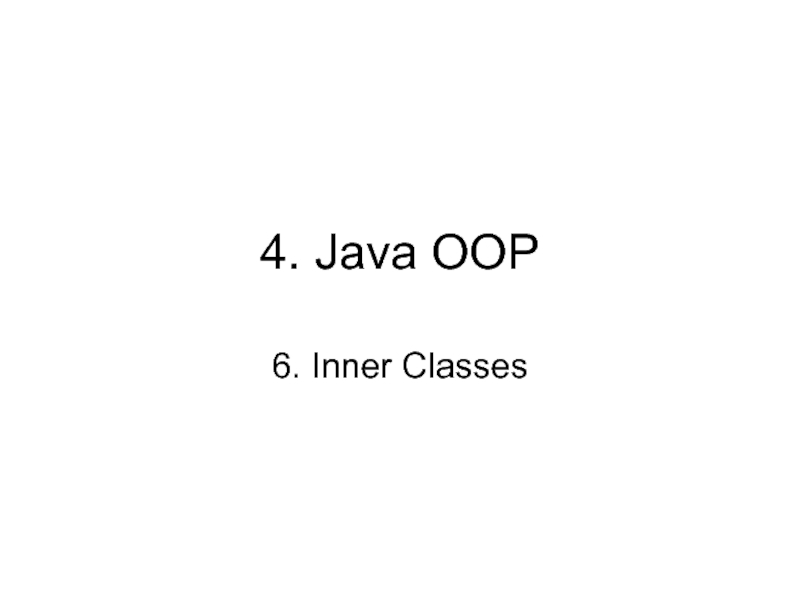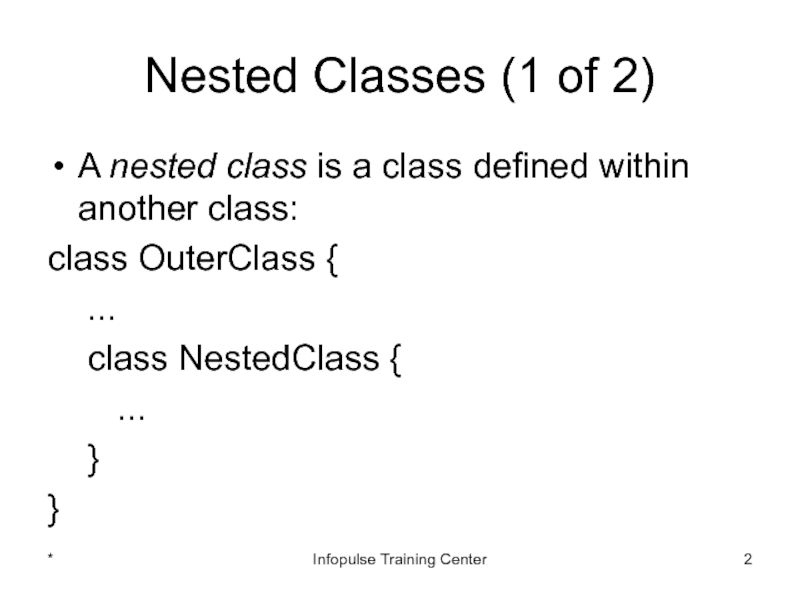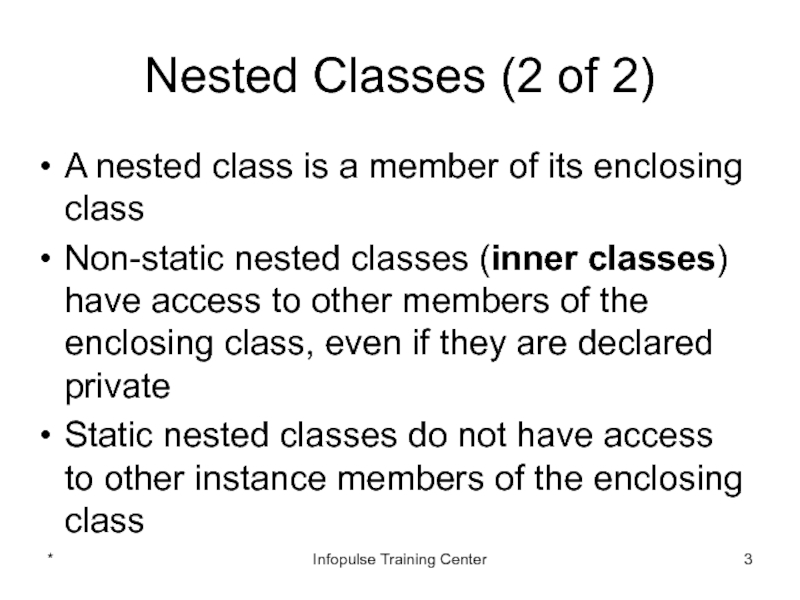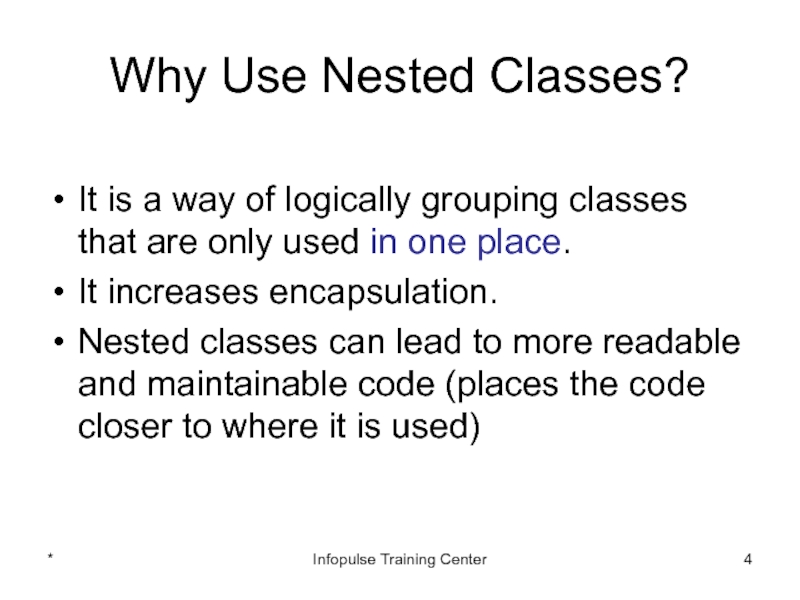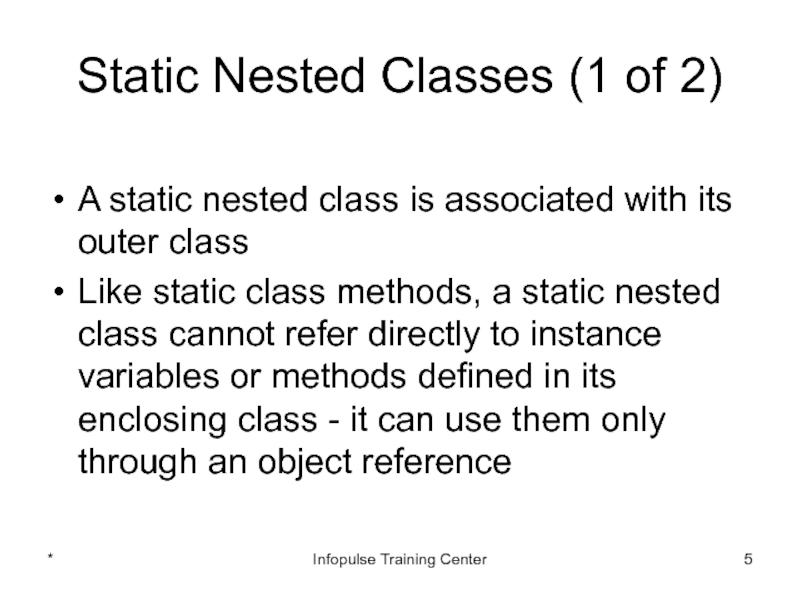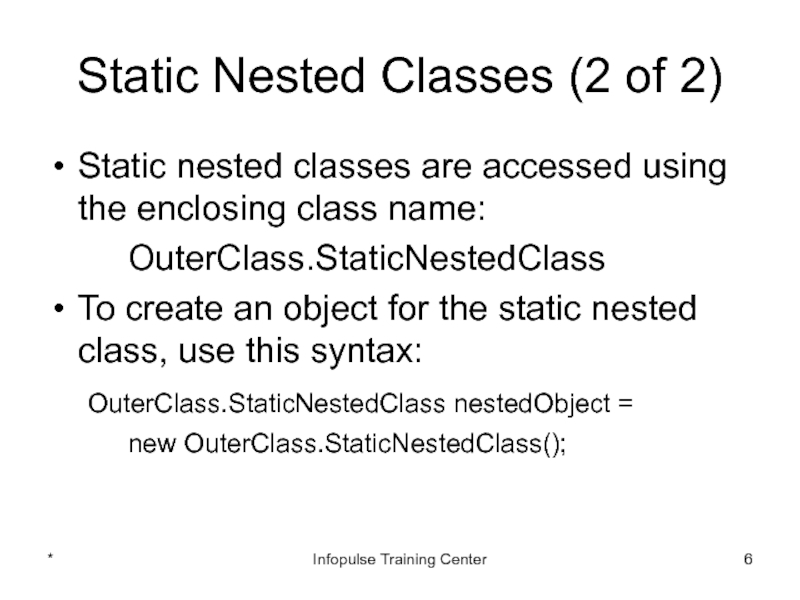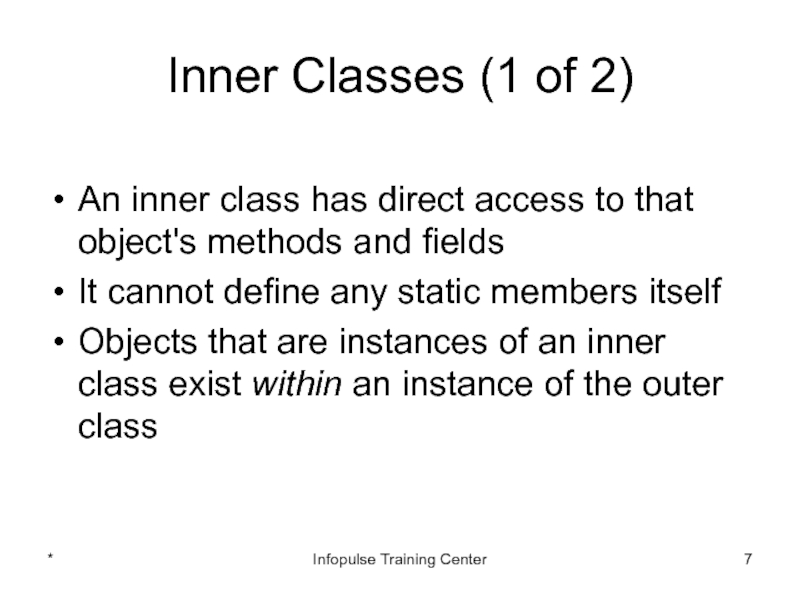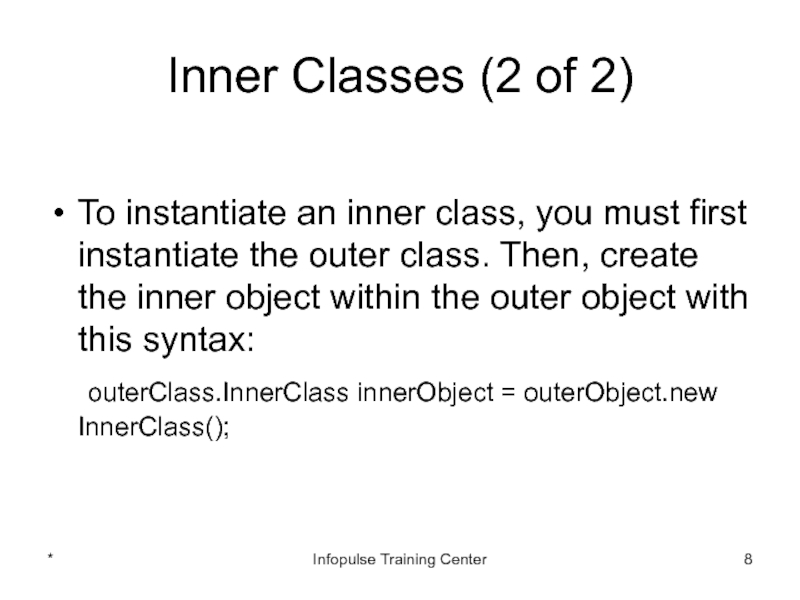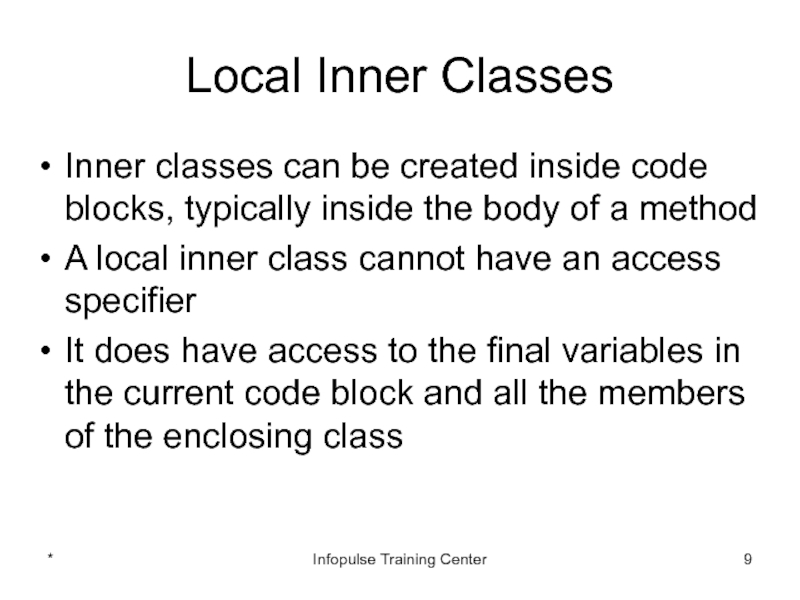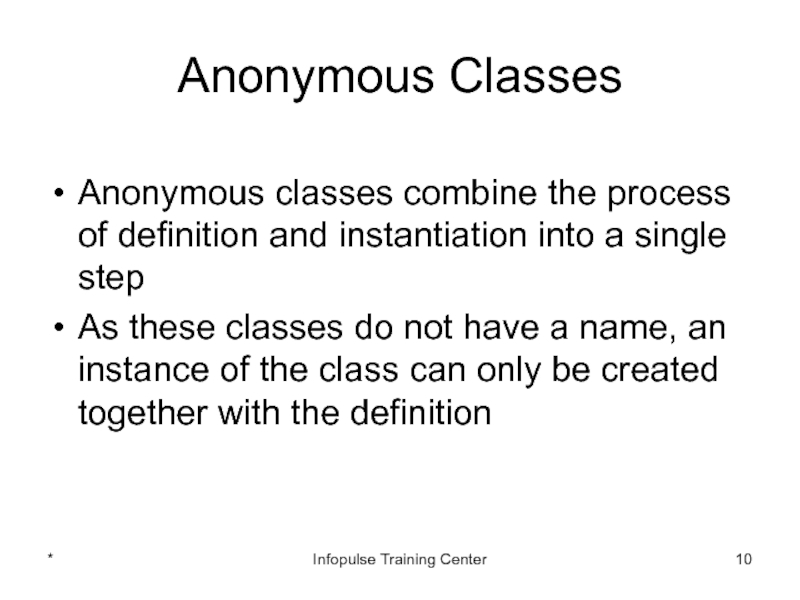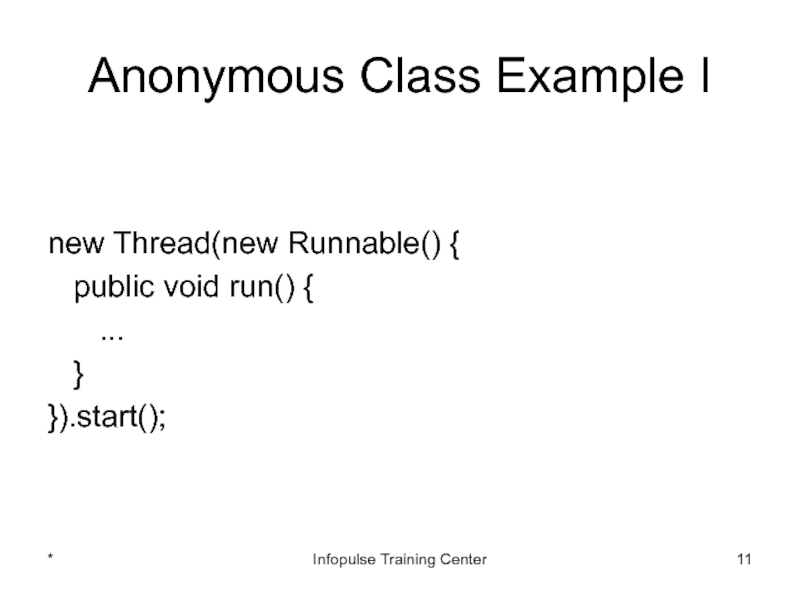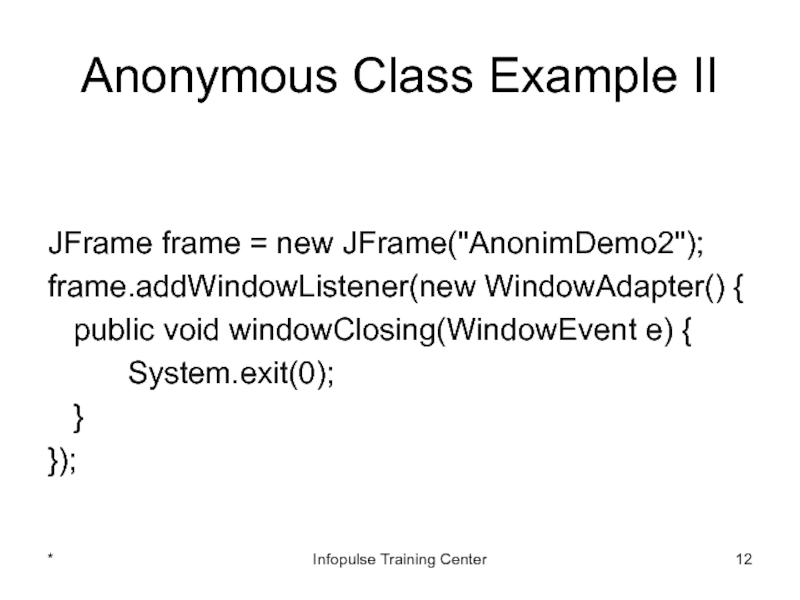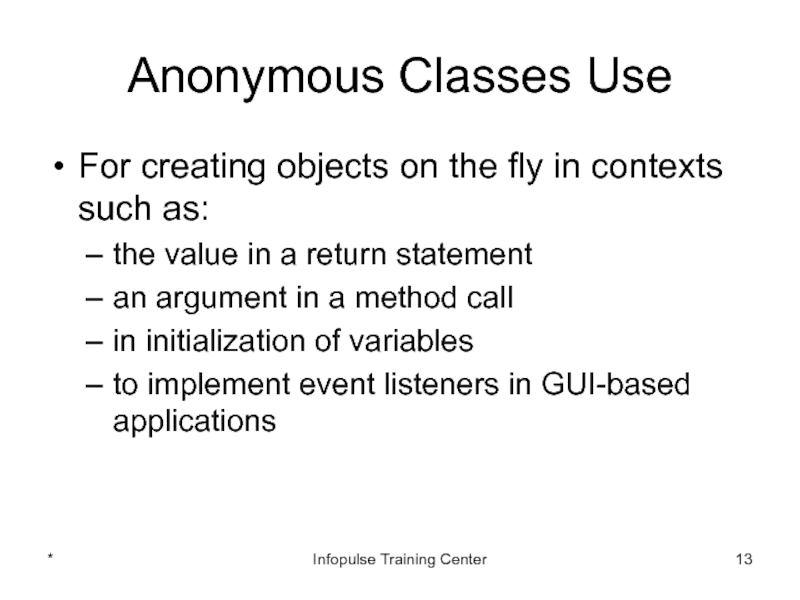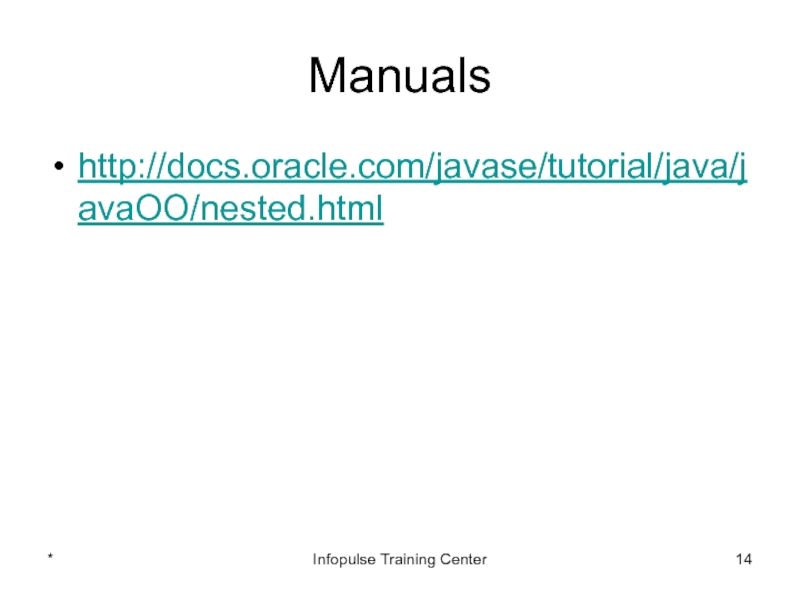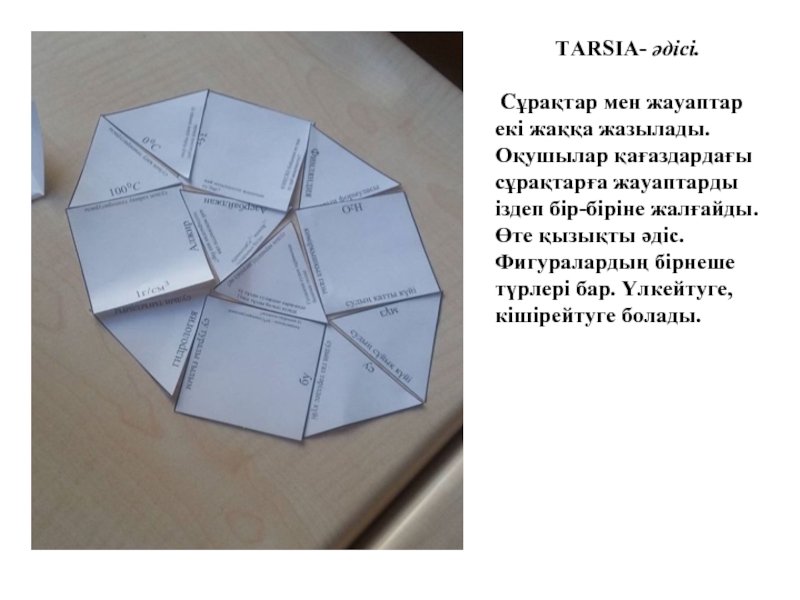- Главная
- Разное
- Дизайн
- Бизнес и предпринимательство
- Аналитика
- Образование
- Развлечения
- Красота и здоровье
- Финансы
- Государство
- Путешествия
- Спорт
- Недвижимость
- Армия
- Графика
- Культурология
- Еда и кулинария
- Лингвистика
- Английский язык
- Астрономия
- Алгебра
- Биология
- География
- Детские презентации
- Информатика
- История
- Литература
- Маркетинг
- Математика
- Медицина
- Менеджмент
- Музыка
- МХК
- Немецкий язык
- ОБЖ
- Обществознание
- Окружающий мир
- Педагогика
- Русский язык
- Технология
- Физика
- Философия
- Химия
- Шаблоны, картинки для презентаций
- Экология
- Экономика
- Юриспруденция
4. Java OOP. 6. Inner Classes презентация
Содержание
- 1. 4. Java OOP. 6. Inner Classes
- 2. Nested Classes (1 of 2) A nested
- 3. Nested Classes (2 of 2) A nested
- 4. Why Use Nested Classes? It is a
- 5. Static Nested Classes (1 of 2) A
- 6. Static Nested Classes (2 of 2) Static
- 7. Inner Classes (1 of 2) An inner
- 8. Inner Classes (2 of 2) To instantiate
- 9. Local Inner Classes Inner classes can be
- 10. Anonymous Classes Anonymous classes combine the process
- 11. Anonymous Class Example I new Thread(new Runnable()
- 12. Anonymous Class Example II JFrame frame =
- 13. Anonymous Classes Use For creating objects on
- 14. Manuals http://docs.oracle.com/javase/tutorial/java/javaOO/nested.html * Infopulse Training Center
Слайд 2Nested Classes (1 of 2)
A nested class is a class defined
class OuterClass {
...
class NestedClass {
...
}
}
*
Infopulse Training Center
Слайд 3Nested Classes (2 of 2)
A nested class is a member of
Non-static nested classes (inner classes) have access to other members of the enclosing class, even if they are declared private
Static nested classes do not have access to other instance members of the enclosing class
*
Infopulse Training Center
Слайд 4Why Use Nested Classes?
It is a way of logically grouping classes
It increases encapsulation.
Nested classes can lead to more readable and maintainable code (places the code closer to where it is used)
*
Infopulse Training Center
Слайд 5Static Nested Classes (1 of 2)
A static nested class is associated
Like static class methods, a static nested class cannot refer directly to instance variables or methods defined in its enclosing class - it can use them only through an object reference
*
Infopulse Training Center
Слайд 6Static Nested Classes (2 of 2)
Static nested classes are accessed using
OuterClass.StaticNestedClass
To create an object for the static nested class, use this syntax:
OuterClass.StaticNestedClass nestedObject =
new OuterClass.StaticNestedClass();
*
Infopulse Training Center
Слайд 7Inner Classes (1 of 2)
An inner class has direct access to
It cannot define any static members itself
Objects that are instances of an inner class exist within an instance of the outer class
*
Infopulse Training Center
Слайд 8Inner Classes (2 of 2)
To instantiate an inner class, you must
outerClass.InnerClass innerObject = outerObject.new InnerClass();
*
Infopulse Training Center
Слайд 9Local Inner Classes
Inner classes can be created inside code blocks, typically
A local inner class cannot have an access specifier
It does have access to the final variables in the current code block and all the members of the enclosing class
*
Infopulse Training Center
Слайд 10Anonymous Classes
Anonymous classes combine the process of definition and instantiation into
As these classes do not have a name, an instance of the class can only be created together with the definition
*
Infopulse Training Center
Слайд 11Anonymous Class Example I
new Thread(new Runnable() {
public void
...
}
}).start();
*
Infopulse Training Center
Слайд 12Anonymous Class Example II
JFrame frame = new JFrame("AnonimDemo2");
frame.addWindowListener(new WindowAdapter() {
System.exit(0);
}
});
*
Infopulse Training Center
Слайд 13Anonymous Classes Use
For creating objects on the fly in contexts such
the value in a return statement
an argument in a method call
in initialization of variables
to implement event listeners in GUI-based applications
*
Infopulse Training Center
